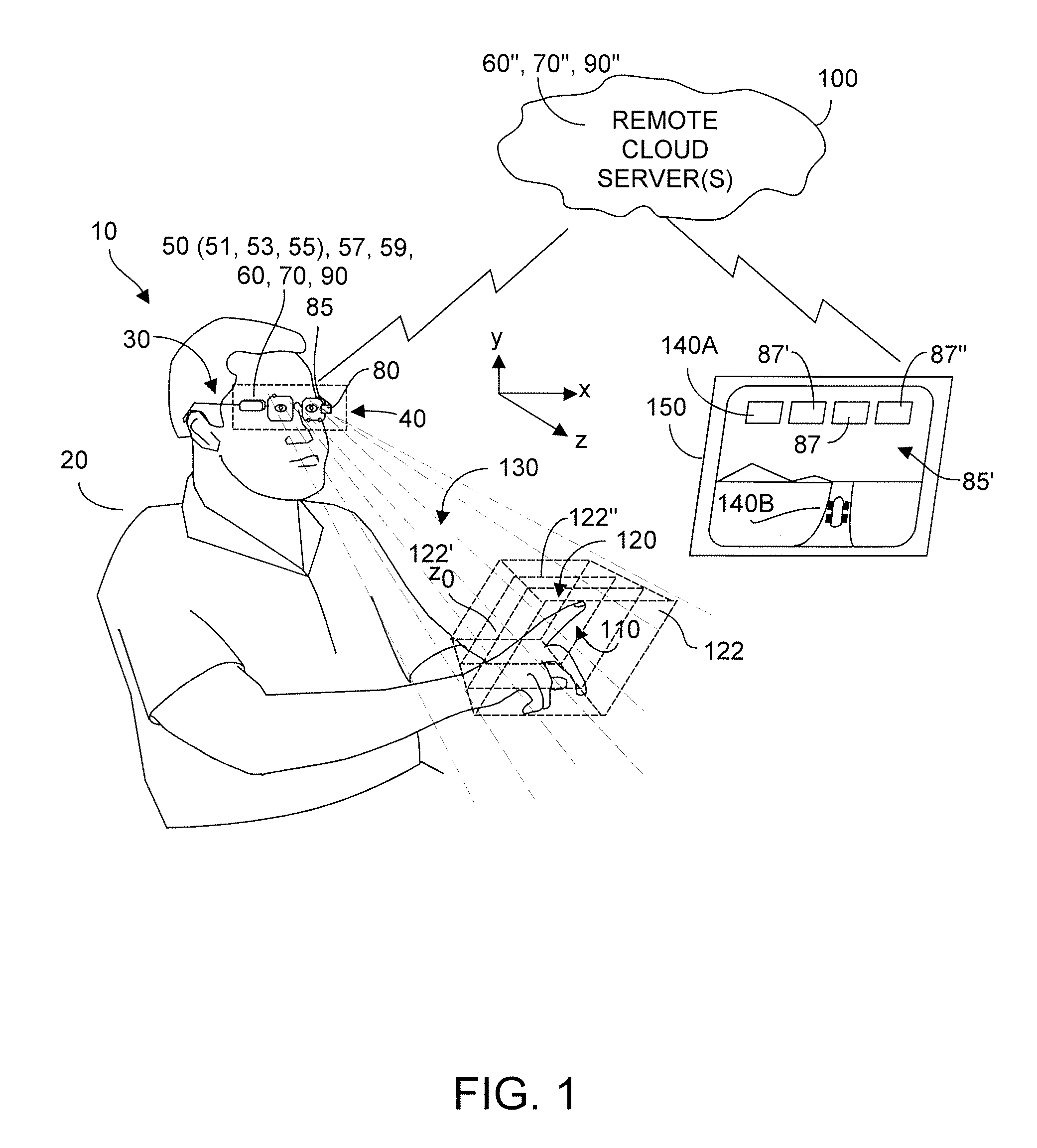Method and system enabling natural user interface gestures with user wearable glasses
a user wearable and user-friendly technology, applied in the field of user wearable glasses, can solve the problems of other alternatives to acquiring optical images that are less desirable, less desirable or less practical, and achieve the effect of low power consumption
- Summary
- Abstract
- Description
- Claims
- Application Information
AI Technical Summary
Benefits of technology
Problems solved by technology
Method used
Image
Examples
Embodiment Construction
[0041]As mobile communication and computer devices proliferate, a new class of mobile devices is gaining popularity, namely devices that a user can wear as regular eye glasses (glasses). Preferably relevant computing, communication and display components are built-in to the glasses-mounted device in a preferably light weight stylish package. Device wearable glasses, if provided with adequate computing resources (on or off the eye glasses), can deliver the benefits of running applications as do other mobile devices. If the user normally wears corrective eye glasses, then lenses in the glasses device would be per the user's corrective lens prescription. Otherwise lenses in the glasses would be neutral, e.g., non-correcting.
[0042]FIG. 1 depicts an exemplary system 10 according to embodiments of the present invention. A user 20 wears eye glasses device 30 that implements a glasses system 40. Device system 40 includes an optical acquisition system 50, which may be implemented as a time-o...
PUM
 Login to View More
Login to View More Abstract
Description
Claims
Application Information
 Login to View More
Login to View More - R&D
- Intellectual Property
- Life Sciences
- Materials
- Tech Scout
- Unparalleled Data Quality
- Higher Quality Content
- 60% Fewer Hallucinations
Browse by: Latest US Patents, China's latest patents, Technical Efficacy Thesaurus, Application Domain, Technology Topic, Popular Technical Reports.
© 2025 PatSnap. All rights reserved.Legal|Privacy policy|Modern Slavery Act Transparency Statement|Sitemap|About US| Contact US: help@patsnap.com



